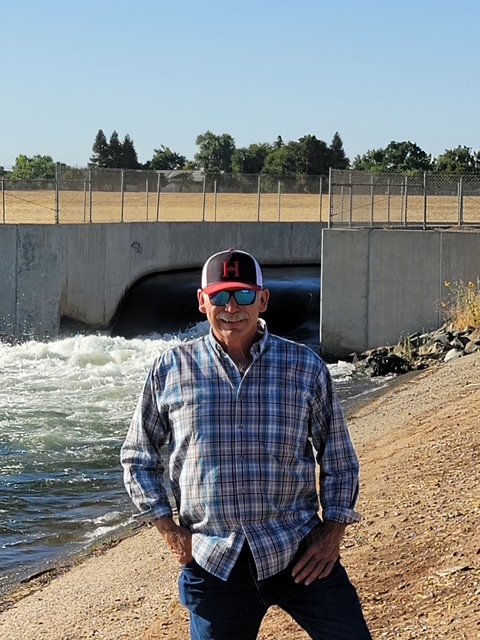In a candid interview with agricultural broadcaster Nick Papagni, Madera farmer and water innovator Matt Angell shares hard truths about California’s water crisis and the complex path forward.
An Innovator in Water Management
Matt Angell, a Madera County farmer and owner of a pump company, brings decades of experience at the intersection of agriculture, technology, and water management. In his conversation with Nick Papagni, Angell blends firsthand farming knowledge with technical insight into California’s groundwater systems.

When asked bluntly if man has messed up water and if it can be fixed, Angell’s measured but hopeful response was clear: yes, it can — but only if we overcome significant technical, environmental, and political challenges.
The Roots of the Groundwater Crisis
California’s water woes stem from a complex mix of climate variability, over-pumping, expanding crop demands, and fragmented regulation. Despite being one of the most regulated states, water management remains disjointed. The 2014 Sustainable Groundwater Management Act (SGMA) aimed to curb overdraft through local collaboration, yet implementation has been uneven.
Madera County’s groundwater picture is especially complicated, with 12 Groundwater Sustainability Agencies (GSAs) managing three sub-basins. This fractured structure leads to poor communication and a lack of public understanding about the crisis’s severity.
A major factor is the expansion of permanent crops like almonds into marginal lands, made possible by drip irrigation. While more acreage and higher yields increase profitability, they also dramatically raise water demand. As Angell puts it: “More crop, more water.”
Declining Water Tables and Disconnected Responses
Living within the Madera Irrigation District, Angell has witnessed the water table drop roughly 140 feet in the last nine years—a startling decline linked to the drought starting in 2011. Wells began running dry and pumps pulled sand, a phenomenon unfamiliar to many growers before then.
Instead of unified action, local agencies and stakeholders often acted independently or at cross-purposes. Outreach efforts like mailed flyers were ineffective. Angell stresses that direct, personal engagement with farmers is crucial to coordinate meaningful responses.
Between 2012 and 2021, Angell’s company installed as many pumps as it had in the previous three decades combined, underscoring the growing reliance on groundwater.
“You Can’t Manage What You Can’t See”
A core message from Angell is the urgent need for real-time water measurement. Groundwater is invisible, and managing it based on outdated models leads to risky assumptions. Continuous sensor data, such as from flow meters, is essential to understand actual usage and aquifer health.
The Challenge of Water Storage and Allocation
When asked about increasing water storage and gaining political support for agriculture, Angell highlights the complexity behind water flows in California. For example, water once thought to be “flushed to the ocean” during high flows may actually be redirected through complex exchanges to irrigation districts.
Political decisions, environmental regulations, and interstate agreements further complicate allocation, often leaving farmers with less surface water and forcing increased groundwater pumping.
Agriculture’s Political Weakness
Angell bluntly identifies agriculture’s lack of political influence as a key problem. While other industries pool resources for lobbying, farmers often remain independent and hesitant to invest in advocacy, despite their sector’s critical role in the economy and food supply.
Increasing regulatory burdens on nitrogen management, environmental compliance, and operations continue to mount. Without a unified political voice, agriculture struggles to influence policies that directly impact it.
Groundwater: The Hidden Asset Farmers Can’t Ignore
A farm’s well is often its most valuable asset—without groundwater, permanent crops like almonds and pistachios couldn’t survive. Yet many water management decisions rely on theoretical models rather than real-time data. Some growers resist metering, fearing what the data might reveal, but Angell warns that avoiding measurement won’t solve the problem.
Urban-Rural Disconnect and Water Awareness
Many Californians have little understanding of where their food comes from, treating grocery stores as “magic land.” At the same time, urban expansion consumes water that farmers depend on, intensifying competition.
Angell recalls a time when home gardens were common, fostering connection to food production. Today, a generational detachment makes building public support for agriculture harder. “Until things change, a lot of people are happy to just get a hamburger and not think about where it came from.”
Regulation Without Cohesion
Despite SGMA’s collaborative intent, fragmented management persists—particularly in Madera County’s multiple GSAs. Permanent crop expansion and drought have pushed water demand beyond sustainable limits. By 2012, wells began failing in unprecedented ways, but outreach efforts to coordinate responses have fallen short.
Measurement as the Foundation of Management
“You can’t manage what you can’t see.” Accurate, continuous groundwater measurement via modern sensors is critical. Without it, water management relies on assumptions and outdated snapshots, risking irreversible damage.
Widespread Groundwater Overdraft in the Central Valley
Groundwater overdraft is not unique to Madera. High overdraft areas stretch from Modesto to Bakersfield, affecting millions of acres. Irrigation districts like Fresno and Turlock reduce pumping by delivering surface water effectively. Outside these districts, limited allocations force increased groundwater use and depletion.
Crisis Mode and Basin Adjudication Risks
The water crisis is urgent. Angell cites the Cuyama Valley example, where basin adjudication—intended to regulate water rights—led to harsh cutbacks on small, longstanding family farms, benefiting larger corporate entities. Lack of transparent metering data left small growers vulnerable.
Angell calls this situation a “travesty” and a threat to rural communities and family farming traditions.
Efficiency in Almond Farming
Angell notes almonds are among the most water-efficient crops—consumers typically eat all they buy, unlike other crops that waste significant portions. He considers almonds “50% more efficient” than many agricultural products.
Alarming Groundwater Data and Projections
Data from Stanford’s Water in the West and the California Department of Water Resources grades most California hydrologic regions as failing in groundwater data collection. Madera Basin earned an F for data quality and a 7.5/10 for groundwater decline.
Models project the water table dropping over 200 feet by 2040, reaching approximately 320 feet below surface. A projected increase in water level by 2060 may only occur if severe legal or economic changes happen—such as basin adjudication or farm failures.
Renewable Energy and Land Use Shifts
The rise of solar projects on agricultural land reflects changing economic realities amid water scarcity. Angell warns against complacency with current models and stresses urgent action to avoid irreversible damage.
A Call for Awareness and Action
Matt Angell’s insights provide a crucial education for growers, water managers, and the wider agricultural community. Transparent data, modern measurement, and collaborative management are essential to safeguard California’s farming future. For questions or to contact Matt Angell, email: matt@uswaterwell.com









